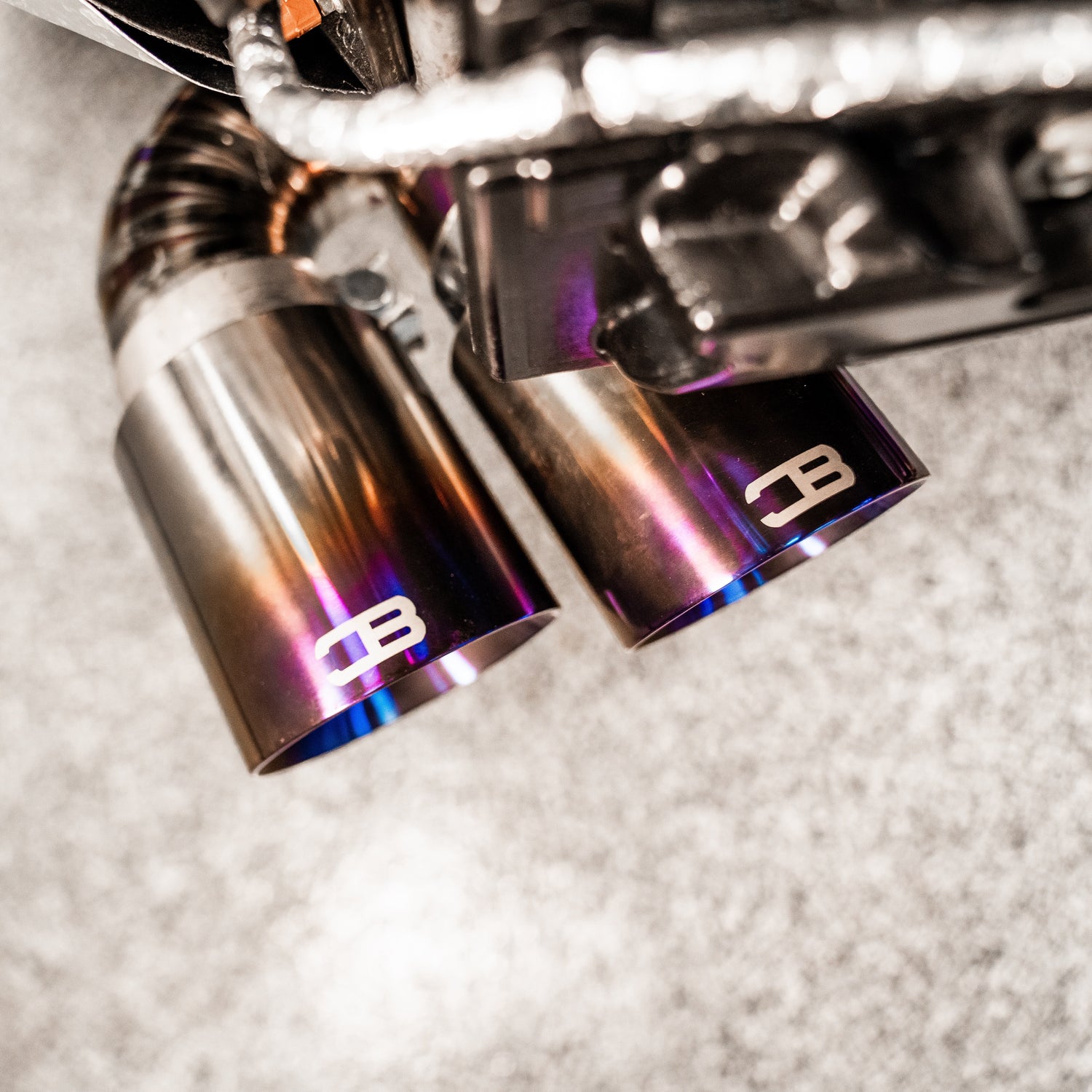
Understanding Valved Exhaust Systems: The Best of Both Worlds
If you’ve been researching performance exhausts, you’ve likely heard the term “valved exhaust” or “valvetronic” exhaust. This technology has taken the aftermarket by storm (and is featured in many CB Customs systems) because it truly offers a no-compromise solution to the age-old loud vs. quiet dilemma. In this article, we’ll explain how valved exhausts work and why they’re a game-changer for sports and supercar owners.
What is a Valved Exhaust? – A valved exhaust is essentially an exhaust system with an integrated bypass valve (or set of valves) that can redirect exhaust flow on demand. In one position, the valves route exhaust through a muffler or restrictive path (quieter, more subdued sound). In the other position, the valves open up a direct, straight-through path (minimal restriction, much louder and more free-flowing). The result is like having two exhausts in one: a civilized mode and an uncorked mode. Many modern exotics come with factory butterfly valves, but aftermarket valved systems often enhance the effect – using larger-diameter bypass sections or more aggressive muffler tuning for a bigger contrast between quiet and loud. For instance, our CB Customs valved setups ensure that when open, the exhaust is as straight and un-muffled as possible for maximum sound and performance, and when closed it’s neighbor-friendly.
How Do You Control the Valves? – Control methods vary. Many systems (including ours) come with a remote control fob that lets you toggle the valves open or closed at the press of a button. Some also integrate with mobile apps or even the car’s own drive mode settings. For example, Frequency Intelligent (Fi) Exhaust provides a remote and an app, and can tie into OEM mode switches on certain cars. Armytrix offers an app that even uses OBD-II data to switch valves automatically based on RPM or boost. In practice, a simple key fob is very convenient – you can open up the exhaust for a spirited canyon run, and switch it closed when you roll into your neighborhood, all in seconds. As one valved exhaust maker describes it, “A simple key fob, a press of a button; you decide when and how you want to be heard”. Many systems also have an automatic mode: e.g., valves closed below a certain RPM and open above it, so you get quiet cruising and full sound when you stomp on it, without needing to manually toggle.
Benefits of Valved Systems: The obvious benefit is sound control. You are effectively solving the biggest drawback of a performance exhaust (being too loud 100% of the time). With valves, you can have an aggressive straight-pipe sound when you want excitement, and a tolerable sound for early mornings or long highway drives to prevent drone. This makes your car far more usable and spouse/neighbor-friendly while still enjoying an exotic roar on demand. But beyond sound, there’s a performance angle: valved exhausts can improve low-end torque compared to a always-open straight pipe. When valves are closed, backpressure increases slightly, which on some engines can help torque at lower RPM (engine tuning is complex, but many OEMs use valves to balance this). Then at high RPM, opening the valves maximizes flow for peak power. Essentially, a valved exhaust can tailor the exhaust flow to different engine conditions – quiet mode mimics a stock-like backpressure, and open mode gives race-like flow. This can translate to a more balanced power curve. Additionally, valved systems often come with premium construction (since it’s a high-end feature). You’ll find ceramic-coated valve motors, high-temperature alloys, and robust designs meant to last through many open/close cycles in a harsh exhaust environment.
Maintenance and Considerations: With great tech comes a bit more complexity. Valved systems have moving parts (the valve actuators) that standard exhausts don’t. Quality systems like those from Capristo, Armytrix, Fi, and our own CB Customs are engineered for reliability – valves are usually vacuum-actuated or motor-driven designs borrowed from OEM applications. It’s good practice to cycle the valves periodically to keep them from sticking (carbon buildup can occur, though rare with clean-burning engines). Also, ensure the control electronics are installed properly – wiring for remote receivers or vacuum lines need to be routed correctly. In terms of weight, valves add a small amount (the valve mechanism), but modern designs keep it minimal. We feel the trade-off is well worth it for the flexibility gained.
In conclusion, valvetronic exhaust systems offer the best of both worlds. It’s like having a button that transforms your car’s personality: whisper-quiet cruiser one moment, raging supercar the next. This technology has gone from a novelty to almost a must-have in the performance exhaust realm because it addresses real practical needs. At CB Customs, we incorporate valved designs in our exhaust lineup for many popular models – giving our customers complete control over their car’s sound and performance. Once you experience being able to choose your exhaust note on demand, you’ll wonder how you lived without it. Loud when you want it, quiet when you need it, all at the touch of a button – that’s the promise of a valved exhaust, and it truly delivers on the hype.
(Side note: Always double-check local laws about exhaust noise. Even with valves closed, an aftermarket exhaust may be louder than stock. Valved systems can help you be courteous and possibly avoid unwanted attention, but they’re not a license to break noise ordinances with impunity. Use your “loud button” responsibly on public roads!)
